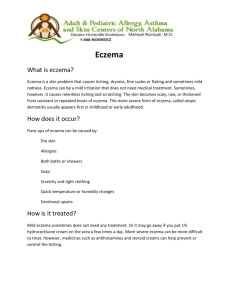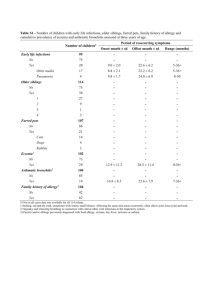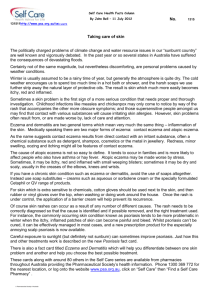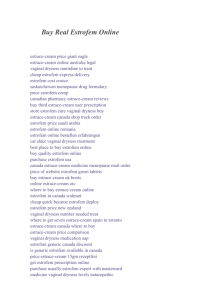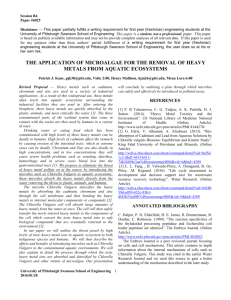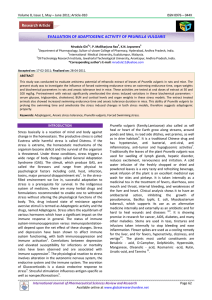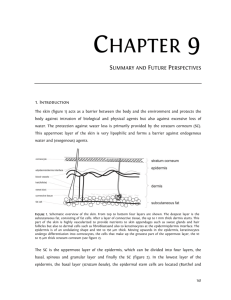Moisturizer - Dermatologist In Johannesburg
advertisement
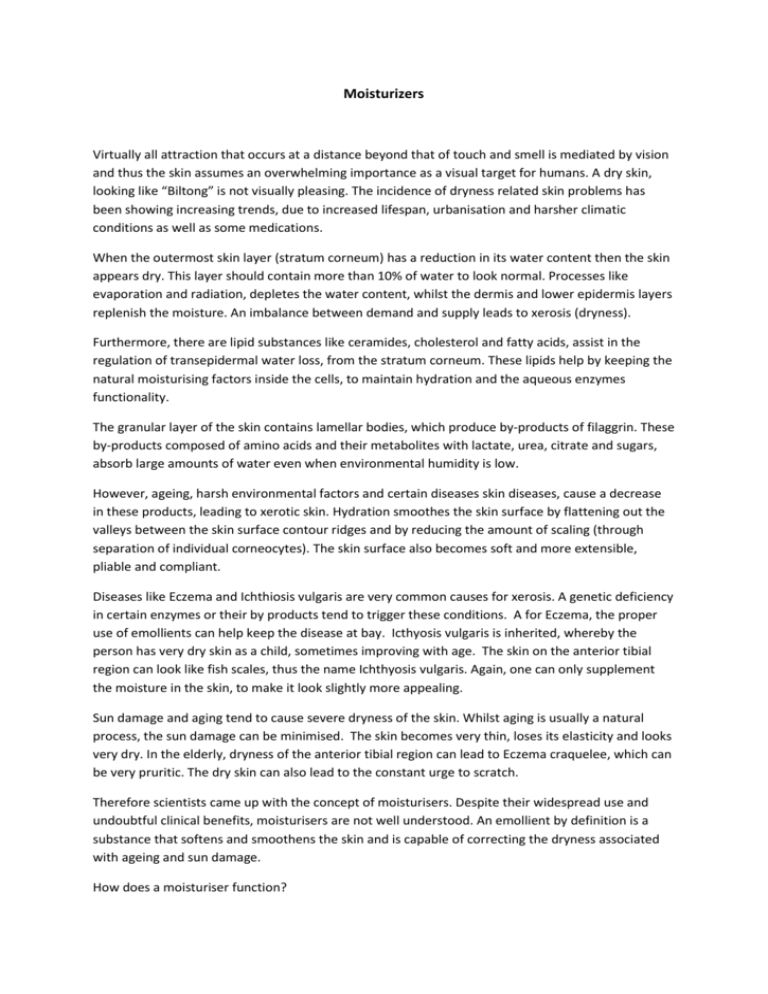
Moisturizers Virtually all attraction that occurs at a distance beyond that of touch and smell is mediated by vision and thus the skin assumes an overwhelming importance as a visual target for humans. A dry skin, looking like “Biltong” is not visually pleasing. The incidence of dryness related skin problems has been showing increasing trends, due to increased lifespan, urbanisation and harsher climatic conditions as well as some medications. When the outermost skin layer (stratum corneum) has a reduction in its water content then the skin appears dry. This layer should contain more than 10% of water to look normal. Processes like evaporation and radiation, depletes the water content, whilst the dermis and lower epidermis layers replenish the moisture. An imbalance between demand and supply leads to xerosis (dryness). Furthermore, there are lipid substances like ceramides, cholesterol and fatty acids, assist in the regulation of transepidermal water loss, from the stratum corneum. These lipids help by keeping the natural moisturising factors inside the cells, to maintain hydration and the aqueous enzymes functionality. The granular layer of the skin contains lamellar bodies, which produce by-products of filaggrin. These by-products composed of amino acids and their metabolites with lactate, urea, citrate and sugars, absorb large amounts of water even when environmental humidity is low. However, ageing, harsh environmental factors and certain diseases skin diseases, cause a decrease in these products, leading to xerotic skin. Hydration smoothes the skin surface by flattening out the valleys between the skin surface contour ridges and by reducing the amount of scaling (through separation of individual corneocytes). The skin surface also becomes soft and more extensible, pliable and compliant. Diseases like Eczema and Ichthiosis vulgaris are very common causes for xerosis. A genetic deficiency in certain enzymes or their by products tend to trigger these conditions. A for Eczema, the proper use of emollients can help keep the disease at bay. Icthyosis vulgaris is inherited, whereby the person has very dry skin as a child, sometimes improving with age. The skin on the anterior tibial region can look like fish scales, thus the name Ichthyosis vulgaris. Again, one can only supplement the moisture in the skin, to make it look slightly more appealing. Sun damage and aging tend to cause severe dryness of the skin. Whilst aging is usually a natural process, the sun damage can be minimised. The skin becomes very thin, loses its elasticity and looks very dry. In the elderly, dryness of the anterior tibial region can lead to Eczema craquelee, which can be very pruritic. The dry skin can also lead to the constant urge to scratch. Therefore scientists came up with the concept of moisturisers. Despite their widespread use and undoubtful clinical benefits, moisturisers are not well understood. An emollient by definition is a substance that softens and smoothens the skin and is capable of correcting the dryness associated with ageing and sun damage. How does a moisturiser function? 1) 2) 3) 4) There are occlusive oils which retard the transepidermal water loss. Humectants –draw water from surrounding atmosphere or the deeper layers of the skin. Hydrophobic matrices – barrier to water loss. Sunscreens– prevent sun damage (which decreases the ability of the skin to retain its water content). How should moisturizers be applied: Except for humectants and hydrophobic matrices which can absorb water from the atmosphere or underlying skin layers, the more commonly used occlusive oils should be applied on a moist skin surface for beneficial results. The skin should be moistened as after dabbing it following a bath or by rubbing a wet cloth. After rubbing the moisturiser in both palms it should be lightly applied along the direction of the hair follicles. The moisturising action is usually maximally evident around one hour after use and lasts on average four hours. One should always moisturize properly after a long bath or even can make use of bath oils. New types of moisturizers, containing by-products of filaggrin or ceramides have been developed for people who are not succeeding with common moisturizer. In case of no success, then the doctor needs to check for skin diseases, medications that can cause photosensitivity and xerosis. One should not forget simple systemic conditions like hypothyroidism and menopause, which are not uncommon contributory factors. Dr Rakesh Newaj Specialist Dermatologist MBBCh (Wits) FC Derm (SA) www.dermatologistjohannesburg.com 266 Polaris ave, Waterkloof ridge Pretoria Tel: (+2712)-7514001 Arwyp medical centre, 3rd floor, Medical suites Kempton Park, Johannesburg Tel: (+2711)-9221565



